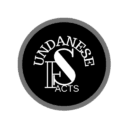Muara Jati: Origins and Cultural Heritage of Cirebon
Muara Jati, once a small fishing village in Cirebon, evolved into a crucial cultural and trade hub. Its strategic location connected local residents with Chinese, Indian, and Arab traders, shaping the region’s rich cultural diversity. Discover how historical significance influenced the artistic and cultural identity of Cirebon today.
1. Introduction: Muara Jati and Its Cultural Significance
To begin with, Muara Jati is not just an ordinary place; it holds deep cultural and historical significance. Located in the heart of Cirebon, this area evolved from a small fishing village into an influential center of culture and trade. As we delve into its rich history, it becomes clear how laid the foundation for the artistic and cultural identity of Cirebon.

2. Historical Background of Muara Jati
Initially, Muara Jati was a small fishing village during the 14th century, and it was part of the Galuh Kingdom. Over time, its location on the coast of the Java Sea became crucial in connecting local inhabitants with traders from China, India, and the Arab world. Furthermore, these interactions played a major role in shaping the cultural diversity that Cirebon is known for today.
3. Muara Jati: The Birth of Cirebon as a Trade Hub
As a result of its strategic location, Muara Jati quickly developed into a bustling trade hub. Not only did it enhance the local economy, but it also became a melting pot of different cultures, with Chinese, Arab, and Indian traders influencing the local way of life. Additionally, the maritime trade that took place here laid the groundwork for Cirebon’s cultural identity.
How Cirebon’s Break from Galuh Sparked a Cultural Revolution
The rise of the Cirebon Sultanate from marked a crucial shift in the region’s history, driving both political and cultural transformation. As a maritime trade hub, Cirebon connected Java with Southeast Asia, spreading Islam and shaping its artistic legacy, with foreign influences seen in its renowned batik and craftsmanship today.
1. Separation from the Galuh Kingdom: The Rise of the Cirebon Sultanate
Later on, Muara Jati made a significant shift when it broke away from the Galuh Kingdom under the leadership of Cakrabumi. This marked the beginning of the Cirebon Sultanate and the spread of Islam in the region. Consequently, this transformation not only changed the political landscape but also reshaped Cirebon’s social and cultural evolution.
2. Cirebon as a Key Player in Maritime Trade
As time went on, by the 16th century, Cirebon had become a key player in maritime trade. Its port at Muara Jati connected Java with traders from across Southeast Asia and beyond. Moreover, Cirebon was not only a commercial center but also a key place for the spread of Islam in West Java, further cementing its role as an important hub.
3. Art and Craftsmanship in Cirebon: The Legacy of Muara Jati
In addition to its commercial success, the interactions at harbor significantly influenced the arts and craftsmanship of Cirebon. Chinese, Persian, Arabic, and Indian cultures introduced new techniques and designs, which the local artisans skillfully incorporated into their crafts. For example, iconic motifs like Wadhasan and Mega Mendung are still seen in the batik and wood carvings of Cirebon today.
Hidden Art of Cirebon: The Cultural Fusion Behind Its Crafts
Cirebon’s unique metalwork and pottery reflect the blend of Hindu-Buddhist and Islamic influences that shaped the region. Lotus motifs in metal crafts and geometric patterns in pottery highlight this fusion. Additionally, glass painting and Islamic calligraphy continue to showcase Cirebon’s artistic legacy, preserving Muara Jati’s cultural impact through storytelling and religious devotion.
1. Unique Metalwork and Pottery: Reflecting Cultural Fusion
Similarly, Cirebon’s traditions of metalwork and pottery reflect this rich cultural fusion. For instance, the use of lotus flower motifs in metal crafts shows both Hindu-Buddhist and Islamic influences. Additionally, the production of pottery with geometric and floral patterns showcases how Muara Jati’s heritage lives on in these crafts.
2. Sustaining the Legacy: Glass Painting and Islamic Calligraphy
In contrast to the more functional crafts, glass painting and Islamic calligraphy became key forms of artistic expression in Cirebon. This section highlights how glass painting, in particular, serves as a canvas for storytelling, often depicting religious narratives. Meanwhile, Islamic calligraphy became an important symbol of the city’s devotion to Islamic art and is another example of Muara Jati’s cultural richness.
3. Muara Jati’s Enduring Cultural Impact
Muara Jati’s transformation from a small fishing village into a cultural and trade hub laid the foundation for Cirebon’s rich history. Trade, religion, and art continues to influence Cirebon’s cultural identity today. Therefore, the enduring legacy of Muara Jati is a testament to its historical and cultural importance in Indonesia’s heritage.
Read more Article Unique Culture of the Baduy Tribe: Traditions, Lifestyle, and Heritage
Visit my Youtube channel for more about Sundanese culture






